Embarking on a website redesign project for a client demands more than a simple overhaul of aesthetics. It necessitates a structured approach, meticulous planning, and a comprehensive roadmap to ensure the final product not only meets but exceeds the client’s expectations. Crafting a successful website redesign project plan involves a series of carefully orchestrated steps that encompass everything from understanding the client’s objectives to delivering a polished, user-centric website.
17- Step Guide to Website Redesign:
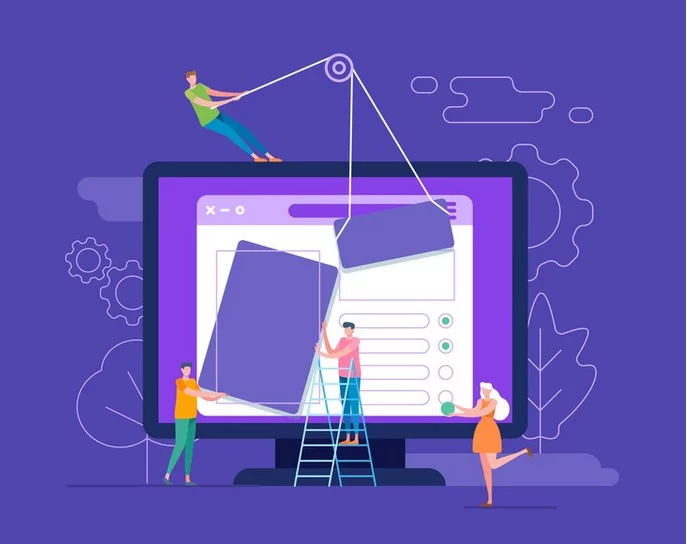
1. Pick the Right Stakeholders for Your Project’s Team

Selecting the right team members for your web redesign project is critical for its success. Understand your project’s goals and assign specialized individuals from your agency team. Transparency and honesty with your clients throughout the redesign process are crucial.
To ensure a seamless process, designate individuals responsible for handling challenges and delays. Grant clients access to project management tools or shared documents like Google Sheets while managing access to protect sensitive data.
Appoint someone to oversee project status and collect updates from decision-makers, facilitating quicker approvals at each stage.
2. Measuring Metrics and Analytics of the Current Website

Evaluate core metrics—traffic, bounce rate, conversions—to understand the existing website’s performance. Documenting these metrics provides a baseline for measuring the redesigned website’s success.
Use Google Analytics for comprehensive website analysis. For clients lacking it, guide them through the installation process, available for various website builders like Squarespace, WordPress, and Wix.
Essential Metrics:
- Traffic Analysis Over Time: Identify trends and correlate traffic surges with website modifications.
- Traffic Sources: Understand the sources of traffic to prioritize improvement areas.
- User Behavior: Analyze user movement on the site to retain valuable pages and strengthen links.
- Bounce Rate: Identify and improve weak spots causing user drop-offs.
- Time on Page: Gauge engagement and address disparities between expected and actual reading times.
- Goal Completions: Set up customized goals to track user actions, enhancing conversion tracking.
For more detailed analysis, consider using tools like Hotjar for heatmap analytics or Moz for SEO insights.
3. Setting the Right Goals

Define tangible and intangible goals aligned with your client’s objectives for the redesign project. These goals differ from on-site goal completions and should inform project components like budget and timeframe.
Typical Redesign Goals:
- Upgrade Graphics: Enhance website aesthetics to attract and retain visitors.
- Enhance User Experience: Improve navigation and functionality to reduce support tickets and bounce rates.
- Increase Traffic: Focus on SEO strategies and relevant content creation to attract organic visitors.
- Boost Leads and Conversions: Optimize messaging and UX to drive visitor actions like purchases or sign-ups.
- Initiate Marketing Campaigns: Equip the site with tracking tools and analytics for future marketing endeavors.
Consider using plugins like MonsterInsights for Google Analytics integration and Yoast SEO for SEO optimization on WordPress sites.
4. Accounting for Risk Factors
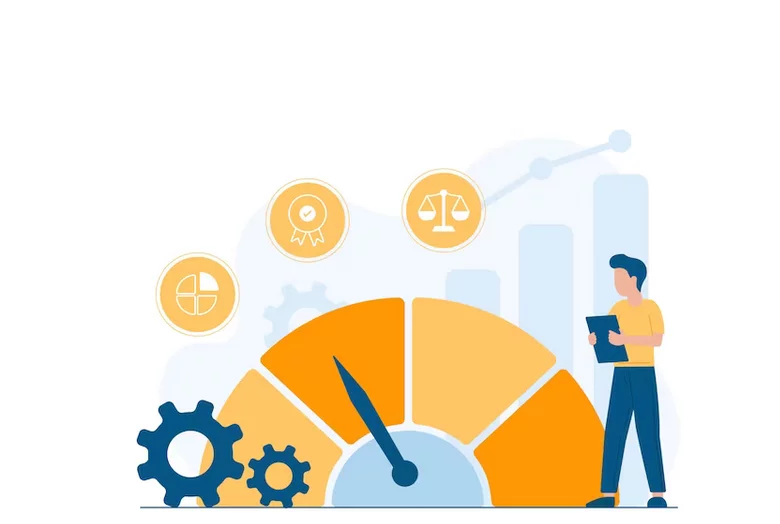
A website redesign project involves various risks that must be carefully evaluated before initiating the process. Consider the following risk checklist:
- Team Time Constraints: Assign a dedicated project manager to handle time-consuming tasks like content collection and reviews. Streamline feedback processes with designated stakeholders to avoid project delays.
- Managing Stakeholders: Limit the number of stakeholders to prevent divergent viewpoints from derailing the project. Ensure clear communication channels and define specific contacts from both the client’s organization and your agency.
- Strategy Deficiency: Without a defined strategy, a website redesign becomes subject to arbitrary changes and trends, making it hard to evaluate success. Establish a strategy based on the metrics you’ve analyzed.
- Design-First Approach: Although aesthetics are crucial, focusing solely on design can lead to an unsuitable website. Align design and functionality with the established strategy to meet both client and user needs effectively.
- Content Overload: Having excessive content without a clear strategy can hinder user experience. Revisit the strategy and prioritize essential elements aligning with website redesign goals.
- Site Function Disruption: During the redesign phase, critical website functionalities might go offline, impacting client business operations. Develop strategies to manage and minimize such disruptions.
- SEO Disruption: Poorly executed redesigns can negatively affect current high-ranking content and organic search traffic. Partner with experts capable of managing SEO aspects like redirects and sitemaps.
- Budget Constraints: Inform clients if the allocated budget doesn’t align with the project scope. Recommend adjustments or additional costs for specific features or functionalities.
- Communication Blockage: Lack of consistent communication between design teams and client stakeholders may lead to project failure. Ensure constant interaction and proper access to stakeholders during planning and execution stages.
Tools & Plugins:
- Project Management: Use tools like Trello, Asana, or Monday.com to streamline project workflows and enhance collaboration among teams and stakeholders.
- Stakeholder Management: For effective communication and stakeholder engagement, consider tools like Slack or Microsoft Teams for instant messaging and Zoom for virtual meetings.
- Content Analysis & Strategy: Tools such as SEMrush, Ahrefs, or BuzzSumo aid in content analysis, keyword research, and identifying relevant topics for content strategy planning.
5. Preparing a Cost Plan
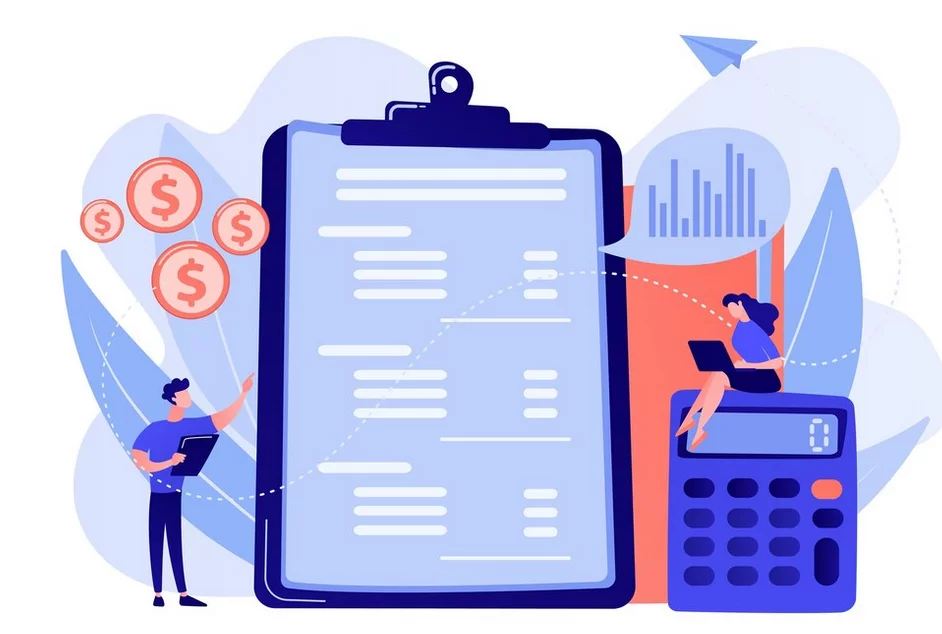
Creating a cost plan for a website redesign is essential, considering the variability in client needs and website complexity.
Factors Influencing Cost:
- Website Type: Custom-built vs. templated designs.
- Advanced Features: Advanced functionalities like e-commerce or database integration.
- Visual Elements: Costs vary based on design complexity and animations/transitions.
Cost Estimates: Use tools like Cost Calculator to estimate website development costs based on different factors and functionalities.
6. Planning a Strategy
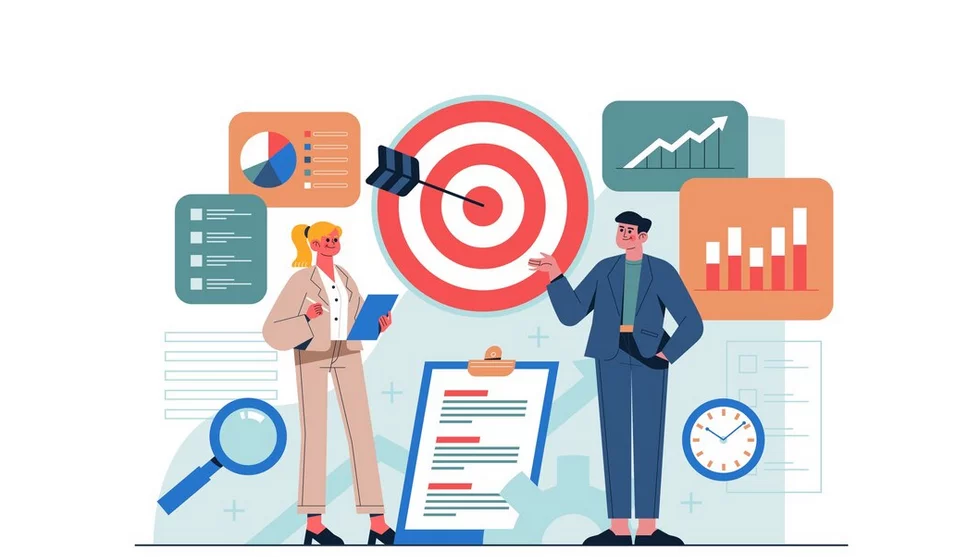
Developing a comprehensive strategy ensures effective utilization of resources and aligns with client objectives:
- Conversion Strategy: Identify conversion points, strategize user pathways, and set goals for increased conversions. Use tools like Unbounce for landing page optimization and Google Optimize for A/B testing.
- Acquisition Strategy: Plan how to attract visitors through advertising and marketing channels. Utilize tools like Facebook Ads Manager for social media advertising and Google Ads for search and display ads.
- Content Strategy: Develop a content plan aligned with client objectives and audience needs. Leverage tools like Grammarly for content quality and HubSpot for content management and publishing.
7. Get Clarity on Branding and Messaging By Identifying Your Client’s Buyer Personas

Understanding your client’s customers, or buyer personas, is crucial for the success of your website redesign strategy. Follow these steps to identify and map out buyer personas effectively:
- Sales Team Input: Engage with frontline sales employees who interact frequently with customers. Their insights about customer behavior, preferences, and interactions with the website, sales, and marketing can be invaluable.
- User Behavior Analysis: Use tools like Hotjar and Google Analytics Behavior Flow for heat mapping and analyzing user behavior on the website. It helps to identify common patterns that hint at similar buyer personas.
- Ad Performance Review: Examine ad targeting, messaging, and performance. Effective ad campaigns often reflect and target specific buyer personas. Analyze ad success with different customer profiles in mind.
- Customer Interviews/Surveys: Reach out to past customers for interviews, surveys, or focus groups. Their feedback provides insights and helps validate assumptions about buyer personas.
- Aggregated User Testing: Utilize platforms like UserTesting.com to conduct targeted tests and get direct feedback from your target audience. This method validates assumptions and aids in refining buyer personas.
Tools & Plugins:
- Buyer Persona Research: Tools like HubSpot’s Buyer Persona Template and MakeMyPersona assist in creating and structuring buyer personas.
- Heat Mapping Tools: Besides Hotjar, consider Crazy Egg and Mouseflow for detailed insights into user behavior on web pages.
8. Select the Best Hosting Solution

Choosing the right hosting solution impacts website performance, scalability, and user experience. Consider these factors when choosing a hosting provider:
- Performance: Opt for a provider offering high-speed and optimized servers.
- Scalability: Ensure the hosting service allows easy scaling as the website grows.
- Uptime: Look for providers guaranteeing 99.9% uptime.
- Caching: Evaluate hosting solutions that offer caching for improved site speed.
- Support & Backup: Prioritize providers offering reliable customer support and one-click backup solutions.
9. Choosing a Website Builder and Platform
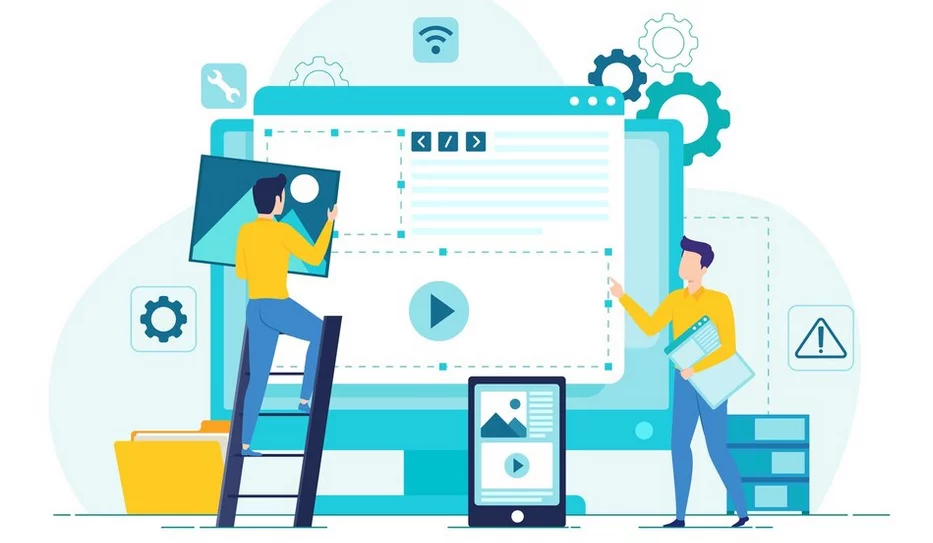
Website builders like Wix, Squarespace, and WordPress offer diverse features and ease of use. Here’s a brief comparison:
- Squarespace: An all-in-one platform for website building, hosting, and marketing. It offers visually appealing sites but may lack extensive customization.
- Wix: Provides complete drag-and-drop flexibility for easy site creation but might have slower loading times due to code bloat.
- WordPress: A robust CMS powering a large percentage of websites worldwide. Offers flexibility, a vast plugin ecosystem, and SEO advantages.
Why WordPress Is Recommended:
- Ownership & Flexibility: Provides ownership of the website and is highly customizable.
- Community Support: Backed by a vast community and numerous free plugins.
- Ease of Use: User-friendly even without extensive technical knowledge.
Tools & Plugins:
WordPress Resources: Explore WordPress.org for the platform itself, Elementor for drag-and-drop page building, and Yoast SEO for SEO optimization on WordPress sites.
10. Sitemap and User Experience

A well-defined sitemap and user experience are pivotal for a successful website:
- Sitemap: Create a clear hierarchy of all website pages and sections. It serves as a roadmap for users and search engines to navigate the site effectively.
- Navigation: Keep top-level navigation concise and user-centric. Use clear CTAs and consider mega menus for complex sites.
- Responsive Design: Prioritize mobile-first design considering the increasing usage of mobile devices. Ensure responsiveness across various screen sizes.
Tools & Plugins:
Wireframing & Design: Utilize tools like Balsamiq or Sketch for wireframing and Figma for collaborative design.
Mobile Testing: Platforms like Google Mobile-Friendly Test help evaluate website responsiveness.
11. Wireframes and Prototyping

After devising a robust conversion strategy and sitemap, it’s time to visualize the website’s structure through wireframes before incorporating visual elements:
Wireframe Development:
- Pen and Paper: Begin with rough wireframes on paper to visualize the website’s layout. It helps in illustrating the user flow and can serve as a foundation for further discussions.
- InVision: Transform high-fidelity wireframes into interactive prototypes with InVision. It allows for testing and gathering feedback on user experience. Design the actual wireframes using tools like Figma or Sketch.
- Adobe XD: Create wireframes and prototypes with Adobe XD. It’s a free tool but may have limitations compared to more collaborative platforms like Figma.
Tools & Plugins:
Wireframing & Prototyping: InVision, Figma, and Adobe XD are powerful tools for wireframing and prototyping.
12. Do Not Forget It Is Redesign and Not Rebranding
Consider your client’s existing brand identity when designing the website. Ensure the website’s visuals align with the established brand elements, avoiding significant deviations that may lead to brand confusion.
13. Have a Clear Vision for Design and Visual Assets
Craft a clear visual plan for the website. Use examples like Apple.com, which focuses on minimalistic design and impactful product visuals to establish an emotional connection with users.
Utilizing Visual Assets:
- Stock Photos: Utilize stock images and videos to enhance visual content. They complement your own content if an in-house creative team is not available.
- Real Product Photography: For physical products, professional photography is essential to accurately represent products and services, fostering credibility.
Tools & Plugins:
Stock Image Resources: Explore platforms like Shutterstock, Adobe Stock, and Unsplash for high-quality stock visuals.
14. Have an SEO (Search Engine Optimization) Strategy

Incorporate SEO into your website redesign project for organic traffic from search engines. Implementing effective SEO involves thorough planning and utilization of various tools:
Planning for SEO:
- Keyword Analysis: Understand the relevant keywords to target and optimize website content. It helps in driving organic and paid search traffic.
- Site Structure: Optimize site structure for search engines with metadata, structured data, and SEO-friendly URLs. Implement 301 redirects for page URL changes.
Tools & Plugins:
SEO Tools: Platforms like Moz, SEMrush, Ahrefs, Screaming Frog, and Google Keyword Planner aid in keyword research, site audits, and monitoring rankings.
15. Accumulate and Evaluate Your Client’s Content Strategy
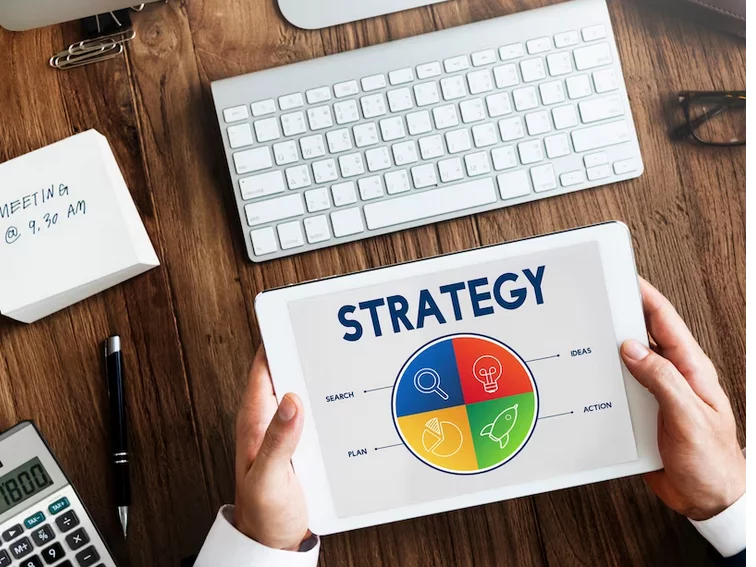
Content-Driven Design:
- Content First, Then Design: Prioritize content before design to ensure harmony between design elements and the content structure.
Content Gathering:
- Content Collection Document: Utilize a structured document to gather website copy, ensuring consistency in brand voice and tone. This document should be easily accessible to stakeholders for input and review.
- Content Gap Identification: Recognize any missing content elements and communicate these gaps to the client to facilitate content creation in alignment with design plans.
Tools & Plugins:
Content Collaboration: Platforms like Google Docs, Dropbox Paper, and Notion facilitate collaborative content creation and review.
16. Testing Usability

Usability Testing:
- Validation Through Testing: Conduct usability tests on developed pages or prototypes to identify user issues and rectify assumptions before finalizing designs.
- Tools for Testing: Employ tools like Google Optimize and UserTesting for A/B testing and qualitative user feedback.
Testing Goals and Questions:
- Usability Objectives: Set clear objectives like page duration, accessibility improvement, and multi-screen compatibility.
- Evaluation Criteria: Assess visual hierarchy, cross-browser functionality, navigation ease, loading speeds, and accessibility.
Tools & Plugins:
Usability Testing Tools: Google Optimize and UserTesting for A/B testing and qualitative feedback.
17. Planning for Launch

Pre-Launch Checklist:
- Quality Assurance Testing: Thoroughly test the website across devices and browsers for functionality and display consistency.
- Stakeholder Training: Conduct training sessions for client stakeholders on website management systems.
- Technical Preparations: Ensure proper form submission notifications, unblocking search engines, and resolving potential DNS issues.
- Domain and Analytics Setup: Connect the domain to hosting, install Google Analytics and Search Console, and submit a sitemap to Google.
- SSL Certificate Installation: Configure an SSL certificate for website security, indicated by a padlock symbol in browsers.
- 301 Redirect Setup: Implement proper redirects for SEO preservation and site navigation.
Tools & Plugins:
Website Launch Tools: Platforms like Google Analytics, Google Search Console, and services for SSL certificate installation from hosting providers like GoDaddy or Namecheap.
Conclusion:
From inception to deployment, each step in this comprehensive 17-step guide plays a pivotal role in ensuring a successful and impactful website redesign for your client. By meticulously defining objectives, conducting thorough research, collaborating closely with the client, and adhering to structured processes, you pave the way for a transformative redesign that not only meets but surpasses expectations. Embrace the iterative nature of the process, stay adaptable, and leverage this guide as a roadmap to craft a website that resonates, engages, and delivers remarkable user experiences.
FAQs on Website Redesign Project:
How long does a typical website redesign project take?
Timelines can vary based on project complexity, scope, and client requirements. On average, a comprehensive redesign may take several weeks to a few months.
How can I ensure client satisfaction throughout the project?
Regular communication, milestone reviews, and incorporating client feedback at key stages of the project can ensure alignment with client expectations.
What if there are changes in requirements midway through the project?
Flexibility is essential. Document change requests, assess their impact on timelines and budgets, and communicate effectively with the client for approval.
How do I handle unexpected challenges during the redesign process?
Anticipate potential challenges, maintain open communication, and have contingency plans in place to address unforeseen issues efficiently.



